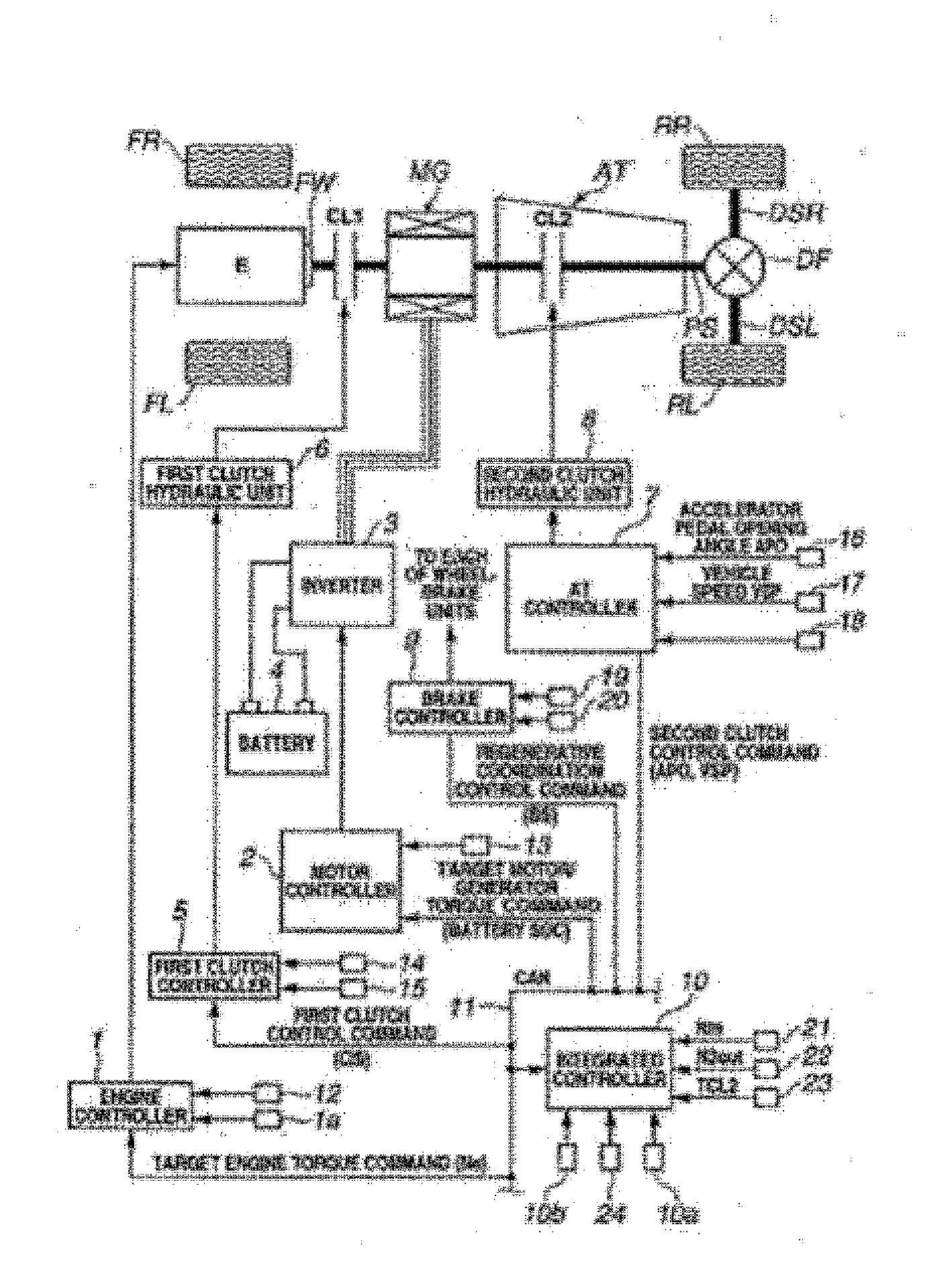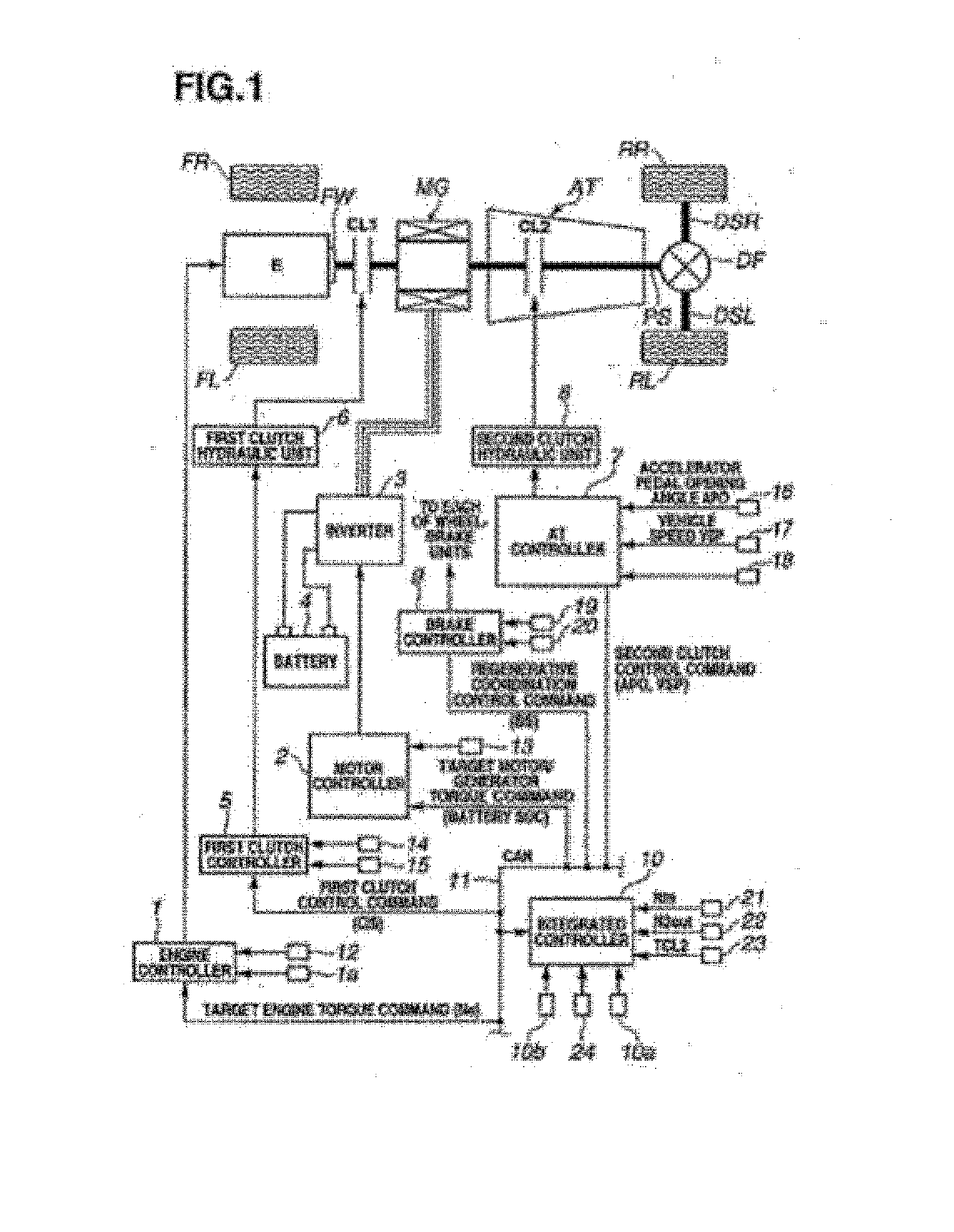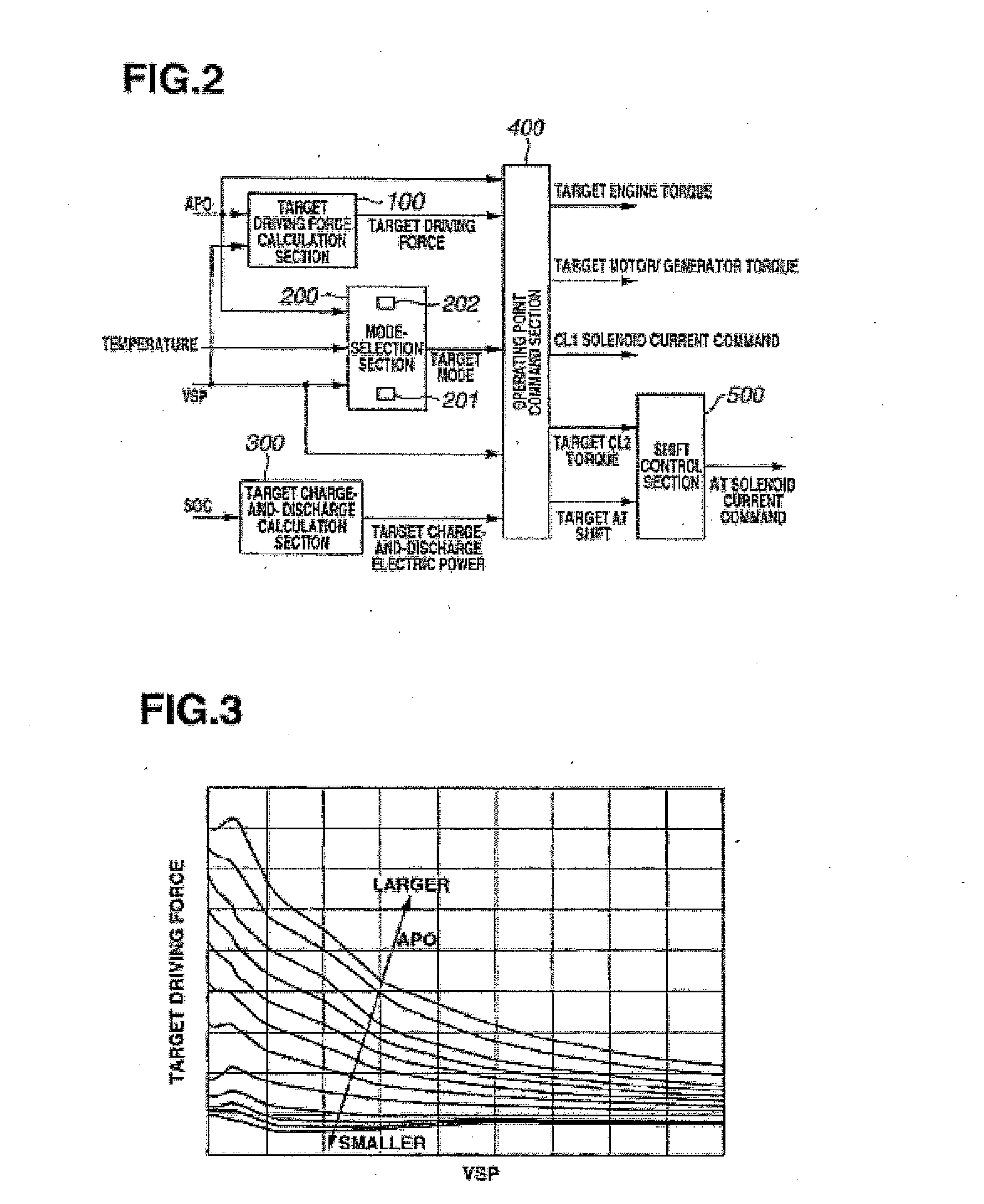Control device for hybrid vehicle
a control device and hybrid technology, applied in the direction of electric devices, machines/engines, process and machine control, etc., can solve the problems of limiting battery output or motor output, and the strategy will not be applicable, so as to reduce the required motor torque, suppress the heating and reduce the slip amount of the second engagement element
- Summary
- Abstract
- Description
- Claims
- Application Information
AI Technical Summary
Benefits of technology
Problems solved by technology
Method used
Image
Examples
first embodiment
[0029]First, description will be given of the configuration.
[0030]The configuration of the control device in a hybrid vehicle in the first embodiment is described by dividing into a “system configuration”, a “control configuration of the integrated controller”, and a “driving mode transition control configuration”, respectively.
[System Configuration]
[0031]FIG. 1 is an overall system diagram showing a rear-wheel drive hybrid vehicle control device to which the first embodiment is applied. Below, with reference to FIG. 1, the system configuration (configurations of driving system and control system) is described.
[0032]As shown in FIG. 1, the driving system in a hybrid vehicle includes an engine E, a first clutch CL1 (a first engagement element), a motor generator MG (motor), a second clutch CL2 (second engagement element), an automatic transmission AT, a propeller shaft PS, a differential DF, a left drive shaft DSL, a right drive shaft DSR, a left rear wheel RL (drive wheel), and a ri...
second embodiment
[0161]In the second embodiment, in the MWSC+CL1 slip control, the target CL1 torque is given by the target driving torque.
[0162]To describe the structure, since the configuration of the second embodiment is the same as the first embodiment except for step 9 inFIG. 7, no specific figure is shown. Thus, a description is give of the step 7 in the second embodiment.
[0163]In step S9, following the YES determination at step S8, the system performs the MWSC+CL1 slip control process, and the process proceeds to RETURN. Specifically, in the MWSC+CL1 slip control process, the first clutch CL1 is slip-engaged by setting a target CL1 torque as the (target driving torque), the engine E is feedback controlled to reach an idle rotation speed, the motor generator MG is feedback controlled to attain a target rotation speed (yet, lower value than the idle speed) obtained by adding the output side rotation speed Nxl2out of the second clutch CL2 a predetermined rotation speed β′. Further, the second cl...
third embodiment
[0171]In the third embodiment, in the MWSC+CL1 slip control, the target CL1 torque is given by the (target driving torque+power generation torque).
[0172]To describe the structure, with the exception of step S9 in FIG. 7, the configuration of the third embodiment is the same as the first embodiment. Therefore, specific figures are omitted. Below, a description of the step S9 in the third embodiment is given.
[0173]In step S9, following the YES determination at step S8, the system performs the MWSC+CL1 slip control process, and the process proceeds to RETURN. In the MWSC+CL1 slip control process, specifically, the first clutch CL1 is slip-engaged by setting the target CL1 torque as the (target driving torque+power generation torque) maintaining the engine in operation, and the engine E is feedback controlled in order for the engine to rotate at idle speed. Further, the motor generator MG is feedback controlled so as to attain a target rotation speed (yet, at lower value than idle speed...
PUM
 Login to View More
Login to View More Abstract
Description
Claims
Application Information
 Login to View More
Login to View More - R&D
- Intellectual Property
- Life Sciences
- Materials
- Tech Scout
- Unparalleled Data Quality
- Higher Quality Content
- 60% Fewer Hallucinations
Browse by: Latest US Patents, China's latest patents, Technical Efficacy Thesaurus, Application Domain, Technology Topic, Popular Technical Reports.
© 2025 PatSnap. All rights reserved.Legal|Privacy policy|Modern Slavery Act Transparency Statement|Sitemap|About US| Contact US: help@patsnap.com



